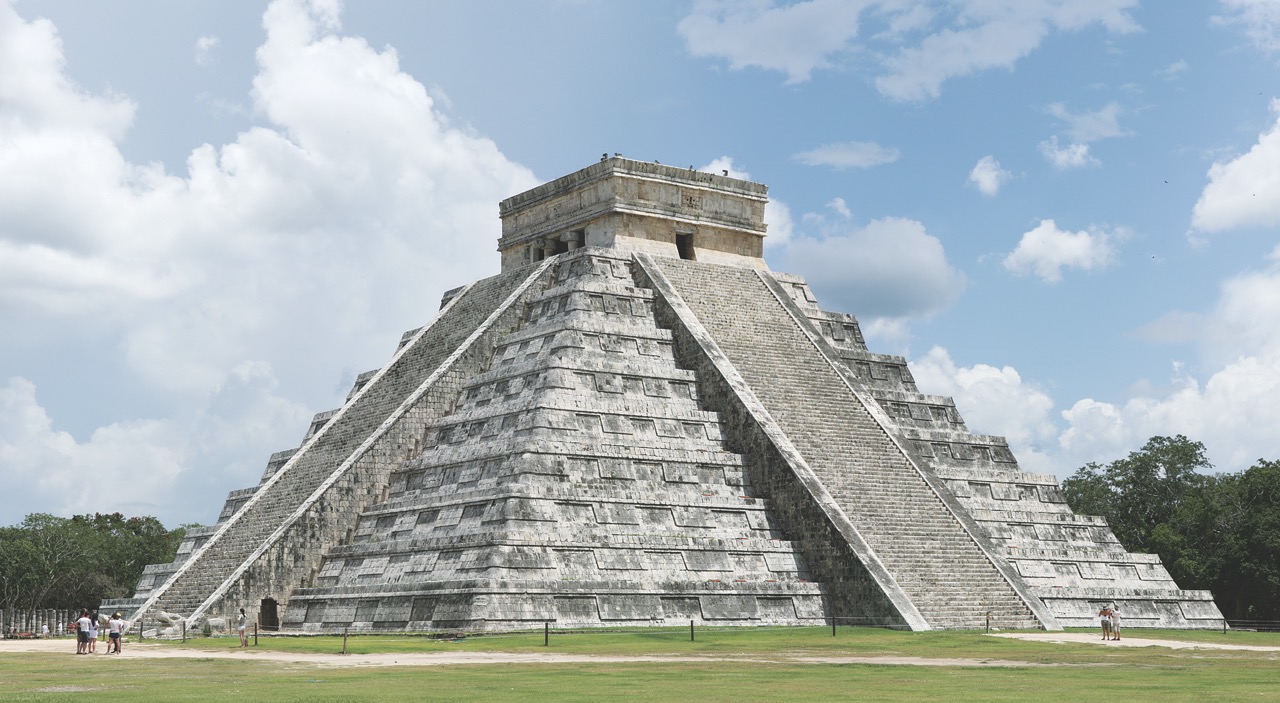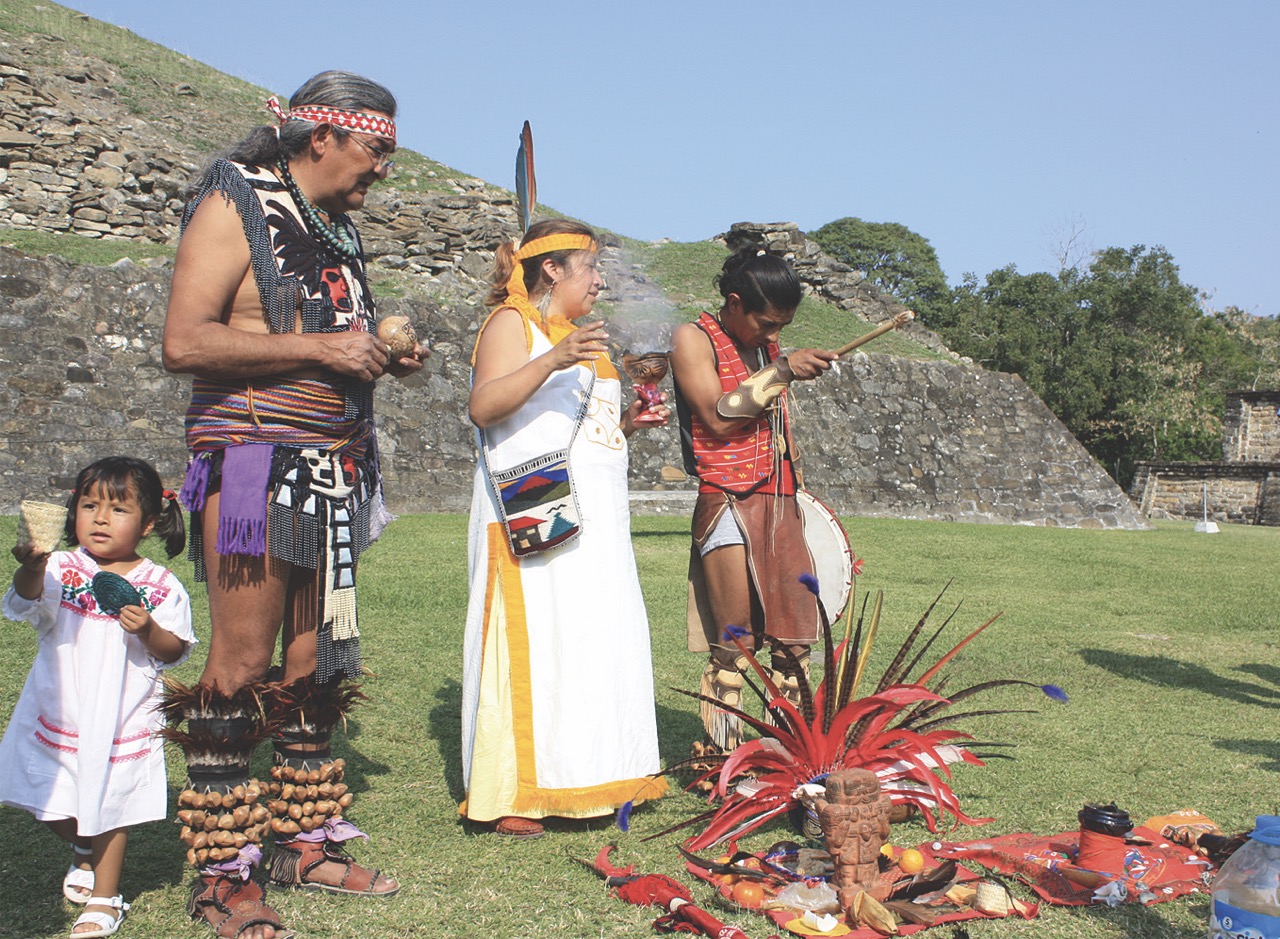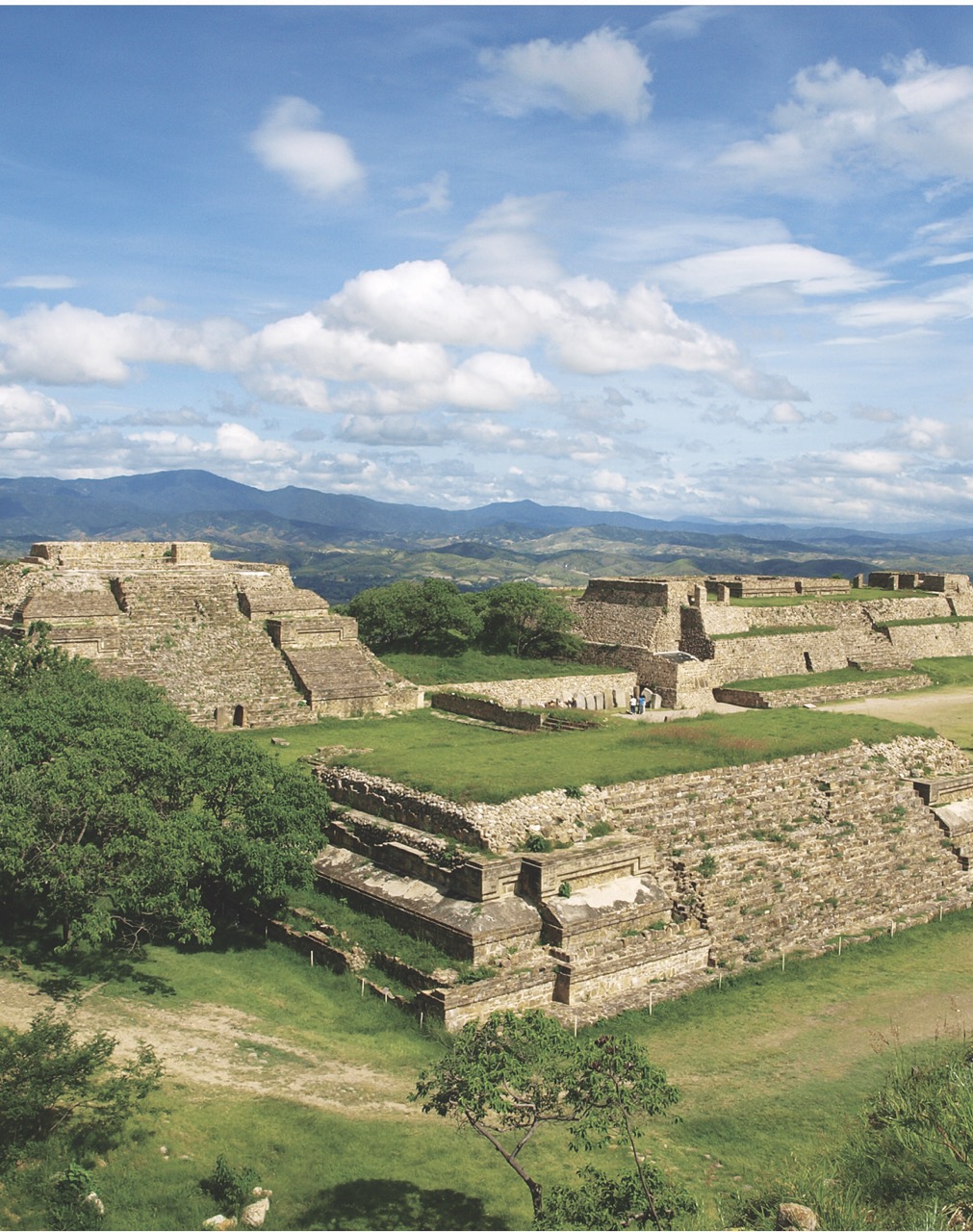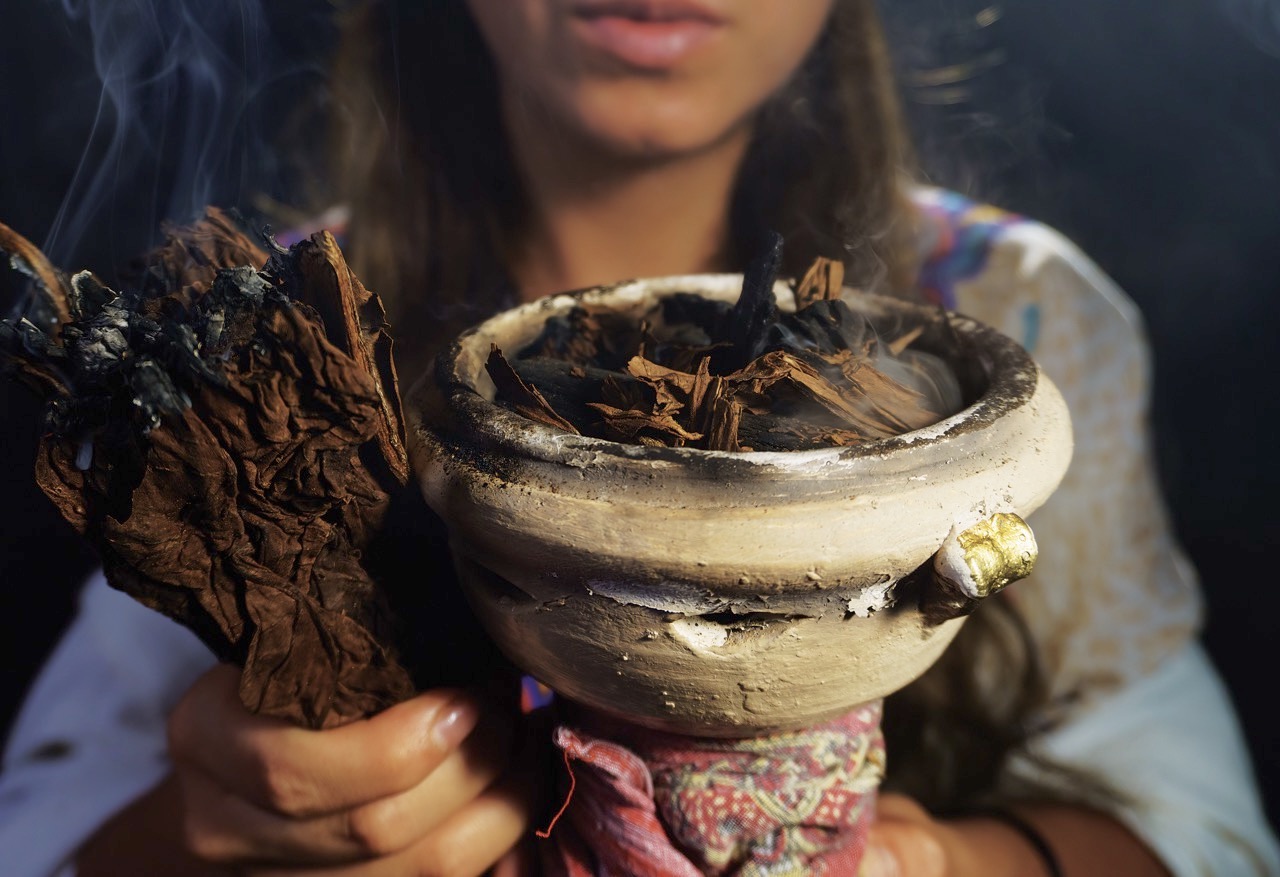From temples to ancient rituals, Mexico is a top destination for spiritual tourism
Mexico, a country inhabited since 8,000 BCE, stands as a testament to millennia of culture and tradition. Recognized as one of the world's six cradles of civilization, its culture, deeply intertwined with nature, traces back to the highly spiritual Aztec civilization. Today, although indigenous tribes and communities are in the minority, their rich cultural heritage and traditions are preserved, catapulting Mexico to the forefront of spiritual tourism. In fact, it ranks fifth globally in this realm.
Tracing Mexico's Spiritual Roots
Mexico's spiritual heritage is deeply rooted in its connection with the land and nature, starting with its agricultural practices. Indigenous communities revered rituals, community bonding, festivity, mysticism, and sacrifice. Their deities were often linked to natural elements such as earth, fire, and water, reflecting a profound respect for nature.
Natural sites like caves, cenotes (sinkholes), and mountains are believed to be rich in spiritual energy. Popular destinations for spiritual journeys in Mexico include the Yucatán Peninsula, San Cristobal, Oaxaca, Quintana Roo, Cuetzalan, Tulum, and Cancun. These places offer unique experiences deeply rooted in Mexico's spiritual past.
At the core of Mexican spirituality are healing practices. Traditional healers, known as curanderos, blend herbal remedies and prayers to treat emotional, physical, and spiritual ailments. Their methods of spiritual cleansing are integral to fostering overall well-being, embodying the essence of Mexico's spiritual journey.
The ruins of Chichen Itza

Chichen Itza: A Majestic Mayan Legacy
Chichen Itza, a UNESCO World Heritage Site and one of the New Seven Wonders of the World, stands as a testament to the grandeur of the ancient Mayan civilization. This sprawling archaeological site, located in Tinúm Municipality, Yucatán State, represents one of the largest Mayan cities ever built. Today, it remains one of the most visited sacred sites of the Mayan heritage, drawing visitors from around the world.
Historical and Cultural Significance
In its prime, Chichen Itza was a hub for art, philosophy, science, and spirituality. It was revered as a center of learning, attracting both students and teachers who sought to quench their thirst for knowledge and master the realms of immateriality. This rich history contributes to its allure as a site of profound cultural and historical significance.
Must-See Mayan Monuments
Chichen Itza houses 26 remarkable Mayan ruins. The most notable among them include:
- Temple of Kukulcán: Dedicated to the Mayan feathered serpent deity, this iconic pyramid is a marvel of architectural and astronomical precision.
- Temple of Warriors: A large stepped pyramid showcasing the might and skill of the Mayan warriors.
- Great Ball Court: The largest known ballcourt in Mesoamerica, where the Mayans played their famous ballgame.
- Osario Pyramids: Another set of impressive step pyramids.
- Temple of Xtoloc: Named after the Mayan word for 'iguana', it holds its own unique charm.
- Caracol: A circular building with a stone spiral staircase, speculated to have been an astronomical observatory.
- Las Monjas and Akab Dzib: Other notable structures that reflect the intricacy of Mayan architecture.
Sacred Cenotes of the Yucatán Peninsula
The Yucatán Peninsula is dotted with sacred cenotes, natural sinkholes that held spiritual significance for the Mayans. These cenotes were pilgrimage sites and were also used for sacrificial rituals, adding a layer of mystique to the region.
Visitor Information
- Timings: Open daily from 8 AM to 5 PM.
- Entrance Fee: MXN 614.
- Nearest Airport: Mérida International Airport, located approximately 135.9 km away.
Visiting Chichen Itza offers a unique glimpse into the rich legacy of the Mayan civilization, providing an immersive experience into their sophisticated culture and profound spirituality.
The relics at Tulum

The stunning beachside of Tulum, located on the east coast of the Yucatán Peninsula, is renowned for its impressive Mayan ruins perched atop its cliffs. As one of the best-preserved coastal Mayan sites, Tulum stands as a prominent destination for spiritual travel in Mexico. The most significant landmarks include the Temple of the Frescoes, El Castillo, and the Temple of the Descending God.
The Temple of the Frescoes served as an observatory for tracking the sun's movement. Its façade features the depiction of the Maya 'diving god'. El Castillo, notable for its small shrine, provided light that helped guide incoming canoes. Intricate serpent motifs are carved into its upper rooms. The Temple of the Descending God, a two-level structure, is distinguished by a carved figure with wings and a headdress, holding an object in its hands.
Tulum is also famous for its hot springs, such as Maya Blue, Naharon, and Temple of Doom, which complement its breathtaking azure beaches, drawing tourists from around the globe.
Visitor Information:
- Timings: 8 AM to 5 PM.
- Entrance Fee: MXN 90.
- Nearest Airport: Cancun International Airport, located 120 km away.
Soak in the Powers of the Sun and the Moon at Teotihuacan

An ancient Mesoamerican city near Mexico City, Teotihuacan is famous for its numerous Mesoamerican pyramids. The most iconic structures are the Pyramid of the Sun and the Pyramid of the Moon, along with the Temple of Quetzalcoatl (Temple of the Feathered Serpent God).
Known as "the birthplace of the gods," Teotihuacan is steeped in creation myths, stemming from the Aztec belief that the gods created the universe at this very site. The architectural wonders here served as ceremonial sites, with the Pyramids of the Sun and Moon symbolizing cosmic harmony. These pyramids are believed to radiate the respective energies of the sun and the moon. Climbing the steps to their summits was a means for ancient priests to communicate with the gods.
Visitor Information:
- Timings: Open daily from 9 AM to 5 PM.
- Entrance Fee: MXN 80.
- Nearest Airport: Mexico City Santa Lucia Apt (NLU) Airport, located 18.2 km away.
Seek the Blessings of Mother Nature at El Tajin

Source: © Linkogecko / Wikimedia Commons
El Tajin, a domain of the indigenous Totonac people, exemplifies a profound integration of nature into the fabric of their civilization from its inception. Visitors can experience the healing powers of prayer through the ritual ceremonies at El Tajin, offering a unique opportunity to cleanse the soul from bad spirits.
Located in Veracruz, this ancient city invites you to participate in the age-old healing rituals of Mexican spiritualism. A notable ritual to witness is the ceremony of the Voladores (flying men), which is a fertility dance symbolizing the harmony between humans and nature.
In addition, the natives pay homage to and seek blessings from Mother Nature as part of their daily routine. As a mark of respect and to partake in this tradition, it is advisable to bring an offering, such as coffee or bread, when meeting with the local community.
Panoramic Views at Monte Albán

Monte Albán, an archaeological marvel, is situated in the Valley of Oaxaca near Oaxaca City. A testament to the architectural prowess of the Zapotec civilization, this site is distinguished by its hundreds of artificial terraces and its historical use as a ceremonial center.
The Main Plaza stands out as a key area of interest here. The stone monuments scattered around the site, depicting dancing men, are believed to have been integral to sacrificial ceremonies. Ancestor worship was the primary spiritual practice at Monte Albán, reflecting the deep cultural and religious significance of the site.
The elevation of this ancient city was of immense importance to its inhabitants. The elevated position of the hills served as an observatory, providing unobstructed views of the sky. This vantage point was crucial for interpreting omens and portents from the astrological alignment of stars and for determining the timing of agricultural and religious festivals.
Visitor Information:
- Timings: Open daily from 8 AM to 5 PM.
- Entrance Fee: MXN 70.
- Nearest Airport: Oaxaca Airport, located approximately 14.6 km away.
Be Amazed by Aztec Dance Rituals

No spiritual journey in Mexico is complete without witnessing an Aztec dance ritual. These rituals serve as a means of worshiping the gods and maintaining a connection to nature. Dancers form large circles with offerings placed in the center, believed to be a focal point of energy.
The dance, known as concheros, is a pathway to soul cleansing and achieving higher levels of consciousness, bringing one closer to understanding the essence of humanity. Characterized by elaborate headdresses adorned with long feathers and the resonant sound of percussion instruments, the dancers engage in a meditative blend of rhythm and worship.
Enhance Your Spiritual Travel in Mexico
In addition to age-old rituals, there are several activities to enrich your spiritual experience in Mexico. Yoga and meditation retreats, psychedelic experiences, and traditional massages can deepen your connection to the region's spiritual essence.
Experience purification with a steam bath in nature at a Temazcal. The hot springs in Chiapas, Hidalgo, and Oaxaca are renowned for their skin-healing properties and their effectiveness in treating muscular or inflammatory injuries. Engage in rejuvenating yoga retreats at well-known locations like Cozumel, Mazunte, and Puerto Morelos, and conclude with a traditional massage using local honey, Mexican oil, or a Mexican hot stone massage.
Psychedelics such as hallucinogenic cacti, mushrooms, and certain seeds are integral to Mexican spirituality. The Mayan drink balché was consumed to reach exalted states of consciousness for communion with the gods. Explore the numerous retreats and clinics across the country that offer psychedelic therapy to elevate your spiritual journey in Mexico.
Preparing for a Spiritual Journey in Mexico
The Mexican people hold deep reverence for nature, their traditions, and their ancestors. It is vital to show respect for their values and beliefs. Exercise caution when considering a psychedelic healing experience; it is a profound practice that requires the guidance of a trained practitioner and doctor to determine mental readiness. Additionally, be wary of fraudulent shamans.
Unique Facts About Mexico
- Biodiversity: Mexico is one of the most biodiverse countries in the world, home to over 200,000 different species.
- Culinary Heritage: Mexican cuisine is a UNESCO Intangible Cultural Heritage, famous for its variety and flavors, including dishes like tacos, enchiladas, and mole.
- World's Smallest Volcano: Cuexcomate, located in Puebla, is considered the world's smallest volcano, standing just 13 meters tall.
- Chichen Itza: This famous Mayan city has a pyramid that produces a shadow resembling a serpent during the equinoxes, a testament to the Mayans' astronomical skills.
- Monarch Butterfly Migration: Each year, millions of monarch butterflies migrate to Mexico from the U.S. and Canada, a breathtaking natural phenomenon.
- Largest Spanish-speaking Country: By population, Mexico is the largest Spanish-speaking country in the world.




